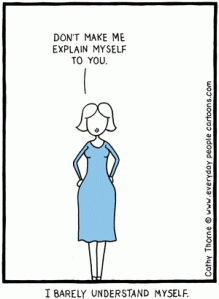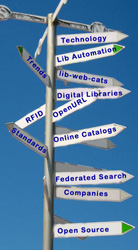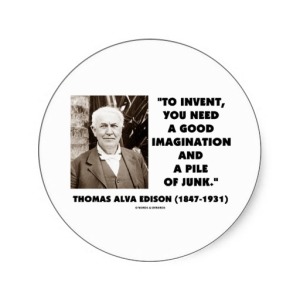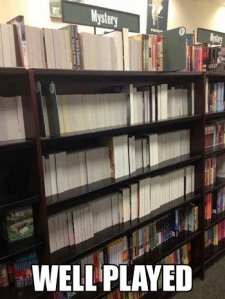As I read through the evolution of library technologies in the Neal-Schuman Library Technology Companion (Burke, 2013), I kept thinking how ironic that I have lived through the development of most of these technologies; from mainstream use of PCs in libraries to the “Techno-Savvy Populace” demanding resources that are available when and where they need or want it. So I was asked to write about what I learned in this module, not much, because I’ve lived it (minus the printing press and development of MARC). However, the reading did get me to thinking, where are heading?
Sometimes, I feel like the child in the back seat of the car (as I’m sure many of us have) asking over and over, “Are we there yet?” We have so much available to us, so many ways we can deliver services to our patrons, but are we just driving around, or is there destination and a specific route to get there? Can we keep pace with the evolution of our patrons and the technology they use to access information?
I found the following infographic that illustrates the libraries of today and the possibilities for libraries and librarians of the future, I find this to be fairly accurate as we are beginning to see these changes and challenges occurring in the here and now. Libraries are a patron driven entity that is evolving and changing everyday, the best way we can serve patrons is to be flexible and adaptive and yet be able to walk that tightrope between trending and traditional. Today more than ever the community is looking to libraries to provide access to the world beyond their immediate surroundings whether through technology or tangible items.
I have come to the conclusion that libraries will never, “be there yet” and if they find themselves in the position of arriving, then they are probably already dead in the water. I think the best route for serving our patrons through any means of technology means that we need to let the patrons do the driving, let them steer libraries toward what meets their information needs in the format with which they feel comfortable, and more often than not, that will include some sort of electronic technology. I don’t think that we have seen the death of paper information, yet, but I have noticed that people seem to be developing deep attachments to their electronic devices, the infographic below illustrates 46% of US adults own smartphones and 88% use their phone to access the internet, 51% for information they need right away; just think about how many people you know personally that you never see without their smartphone. It has become part of them, a close friend to them; they have formed an attachment to that device that could rival any bond between humans.
The role that libraries will play in this scenario or driving is that of passenger / navigator, we’ll ride shotgun; not a passive traveler, but an active participant assisting in the plotting the course with the least amount of detours and toll booths. I’ve heard libraries asking when will all libraries be paperless; my answer, when their patrons are ready, libraries are a direct reflection of the community they serve and they cannot force a façade onto that community.



















